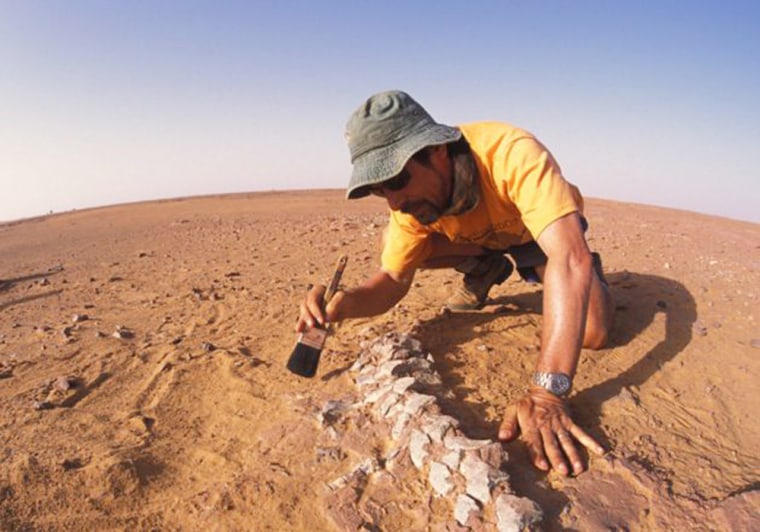Two newfound species of crocodile-like amphibians that lived more than 250 million years ago in desert conditions suggest the animal world was more diverse back then than thought.
The findings may also represent some of the first examples of animal evolution driven by differences in climate.
The species, named Nigerpeton and Saharastega, were found in the Saharan Desert. The region was dry back when the animals were alive, too, but since they were amphibians -- something like giant salamanders -- some water must have been present.
In appearance and behavior, Nigerpeton and Saharastega resembled crocodiles, which are reptiles. Understandably, the croc's body type and predatorial approach seems to have been quite popular, even if you were an amphibian.
"Several fossil groups have converged on the 'crocodilian' body form, as it's well-suited to an amphibious lifestyle," said study leader Christian Sidor of the New York College of Osteopathic Medicine.
The discoveries will be detailed in the April 14 issue of the journal Nature.
"The skull of Nigerpeton, in fact, looks a lot like that of a Nile crocodile," Sidor told LiveScience. "The eyes are elevated and positioned far back on the skull, and the snout is very long. The nostrils are also somewhat elevated, so it could breath with its body mostly underwater."
Nigerpeton was about 7-8 feet long, and it "probably ate anything it could get its fangs into, either in the water or land animals that came too close," Sidor said.
Saharastega looks less like a crocodile. It had a broader, flatter skull and hundreds of small teeth that suggest it was a fish eater.
Importantly, both creatures also have features that don't resemble anything else in the fossil record.
The findings were made in Niger. Previous expeditions to the same region uncovered fossils of a cow-sized reptile and another large reptile with a head the size of a large beach ball and, interestingly, about a dozen rows of teeth.
All four of these large animals, discovered in the same area, have not been found anywhere else. That's significant, because at the time they lived -- the Late Permian era -- Earth's land area existed as one giant continent called Pangea. Other species have been found to exist in widely dispersed locations. As an example, Late Permian fossils of one type of animal can be found in what are now South Africa, Russia, and Laos.
Scientists have come to suspect animals were generally distributed widely around the supercontinent.
"Our finds come from the center of Pangea, which says to me that the biogeographic situation was much more complex than [was] previously thought," Sidor said. "More generally, our study highlights the interaction between climate and the evolution of life on land. I believe that our research shows the earliest evidence for climate-driven faunal changes in the fossil record."
